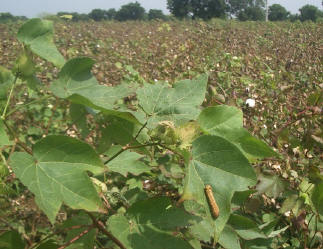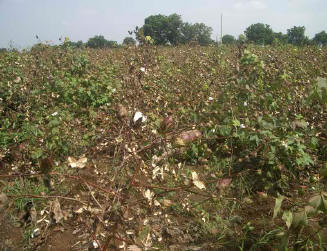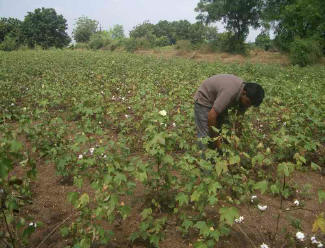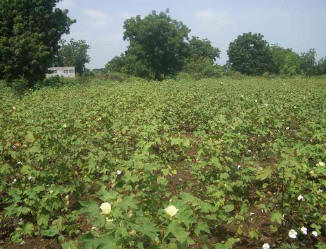Village: Khanpur Sirauli
Tehsil: Hasanganj, District: Unnao
Uttar Pradesh, India
mango
“In India, most of the mango varieties are alternate bearers, which means that they give fruits only every other year. The mango variety Dashehari is also an alternate bearer. Together with a group of 20 farmers I have initiated Homa Organic Farming in mangos in the Unnao district, which is famous for the cultivation of Dashehari variety.”

“I have been practicing Homa Farming since 2003. I have adopted all the organic techniques being suggested by Dr R.K. Pathak, (ex-head of National Horticulture Mission of India) like simple mulching, tree pasting, use of Jiwamrita (a bio-enhancer with a rich microbial consortia, prepared by fermenting cow dung and cow urine along with local soil rich in microbes), Agnihotra enriched water and Biosol.”
“On my farm we regularly perform Agnihotra, daily four hours of Om Tryambakam Homa and in
addition up to 8 hours Om Tryambakam Homa on Full Moon and New Moon days. My mango orchard has shown a continuous increase in production since starting Homa Organic Farming and the quality of the fruits is excellent.”
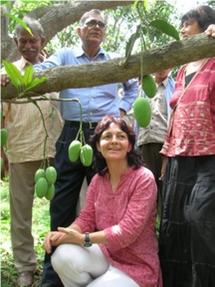
“On about 10 trees in the orchard the mango fruits are growing directly from the branch instead of from the cluster of leaves at the end of the branches.”
The yield data for past 5 years is given below:

Average production in this area is around 10 tons/ha. With all the known techniques using agro-chemicals it can be extended up to 14 tons/ha.
“The fruit quality of the Homa farms in this area is far better than corresponding fruit on farms practising conventional agro-chemical horticulture, regarding taste, size and appearance.”
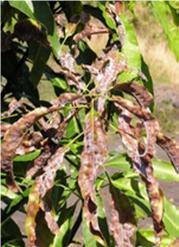

“On none of the Homa farms do the mangoes suffer from a common problem of spongy tissue and a number of pests and diseases have been eradicated; diseases like powdery mildew and pests like the mango hopper and mealy bug. Cost of pesticides was previously about Rs 5,000 per acre. Harvest was decreasing every year. Cost and frequency of the chemical applications (pesticides and fertilizers) was increasing. Taste of the mangoes was not good.”
“In my Homa farm, all these problems have been resolved completely.”


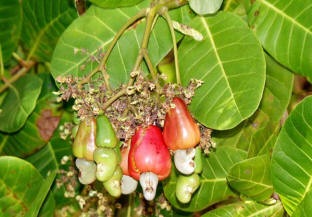
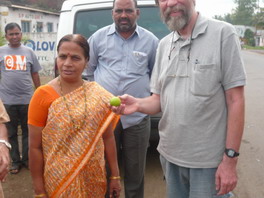 “Near to my house, there is a small garden which has a lime tree and which is about ten years old. It gives good fruit. This year again there were a lot of flowers but during flowering the tree was attacked by an insect pest and it lost all its flowers. People gave various advice for chemical treatments. Then I remembered Dr. Basarkar telling about the Agnihotra ash water solution.”
“Near to my house, there is a small garden which has a lime tree and which is about ten years old. It gives good fruit. This year again there were a lot of flowers but during flowering the tree was attacked by an insect pest and it lost all its flowers. People gave various advice for chemical treatments. Then I remembered Dr. Basarkar telling about the Agnihotra ash water solution.”
 The leaves of most of the coconut palms were being eaten away by the caterpillars and the attack was fast spreading from the palms in the north portion to the southern region.
The leaves of most of the coconut palms were being eaten away by the caterpillars and the attack was fast spreading from the palms in the north portion to the southern region.